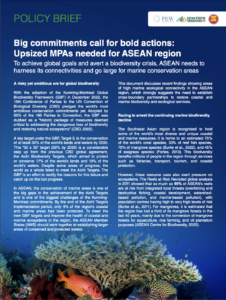Named after the four main islands of Wangi-Wangi, Kaledupa, Tomia, and Binongko, Wakatobi Island consists of 39 islands, three hirsts, and five atolls. Some islands form with the drowning of the baseplate, but atoll formation in Wakatobi Island began with the emergence of some islands followed by the growth of coral reefs around the islands. Coral reefs surrounding the islands continued to grow and formed atolls that are now known as Kaledupa Atoll, Kapota Atoll, and Tomia Atoll. Kaledupa Atoll, which is 49.26 km long and 9.75 km wide, is best known as the longest single atoll in the Asia Pacific region.
Wakatobi National Park encompasses 13,900 square kilometers and is located in Wakatobi District, Southeast Sulawesi Province. It was designated a National Park through Forestry Ministerial Decree Number 393/Kpts-VI/1996 dated 30 July 1996, and was gazetted by Forestry Ministerial Decree No. 7651/Kpts-II/2002 dated 19 August 2002. Some of the protected species found in the park, based on government regulation Number 7/1999, are the yellow-crested cockatoo (Cacatua sulphurea), Pacific reef heron (Egretta sacra), green sea turtle (Chelonia mydas), hawksbill sea turtle (Eretmochelys imbricata), coconut crab (Birgus latro), horned helmet (Cassis cornuta), Triton’s trumpet (Charonia tritonis), and giant clams (Tridacna spp), among others.
Wakatobi National Park is in the Coral Triangle, which covers 6.47 million sq km of land and sea within the territories of Indonesia, Malaysia, Philippines, Papua New Guinea, Solomon Islands, and Timor-Leste. Often called the Amazon of the Seas, the Coral Triangle is home to 600 corals or 76 percent of the world’s known coral species, contains 2,500 or 37 percent of the world’s reef fish species, and is also a spawning and nursery ground for six of the world’s seven species of marine turtles. Wakatobi National Park was designated a Biosphere Reserve in 2012 by the United Nations Educational, Scientific and Cultural Organization (UNESCO) and a “High Biodiversity Area in Coral Triangle Region” by the Coral Triangle Initiative on Coral Reefs, Fisheries, and Food Security (CTI-CFF).





























